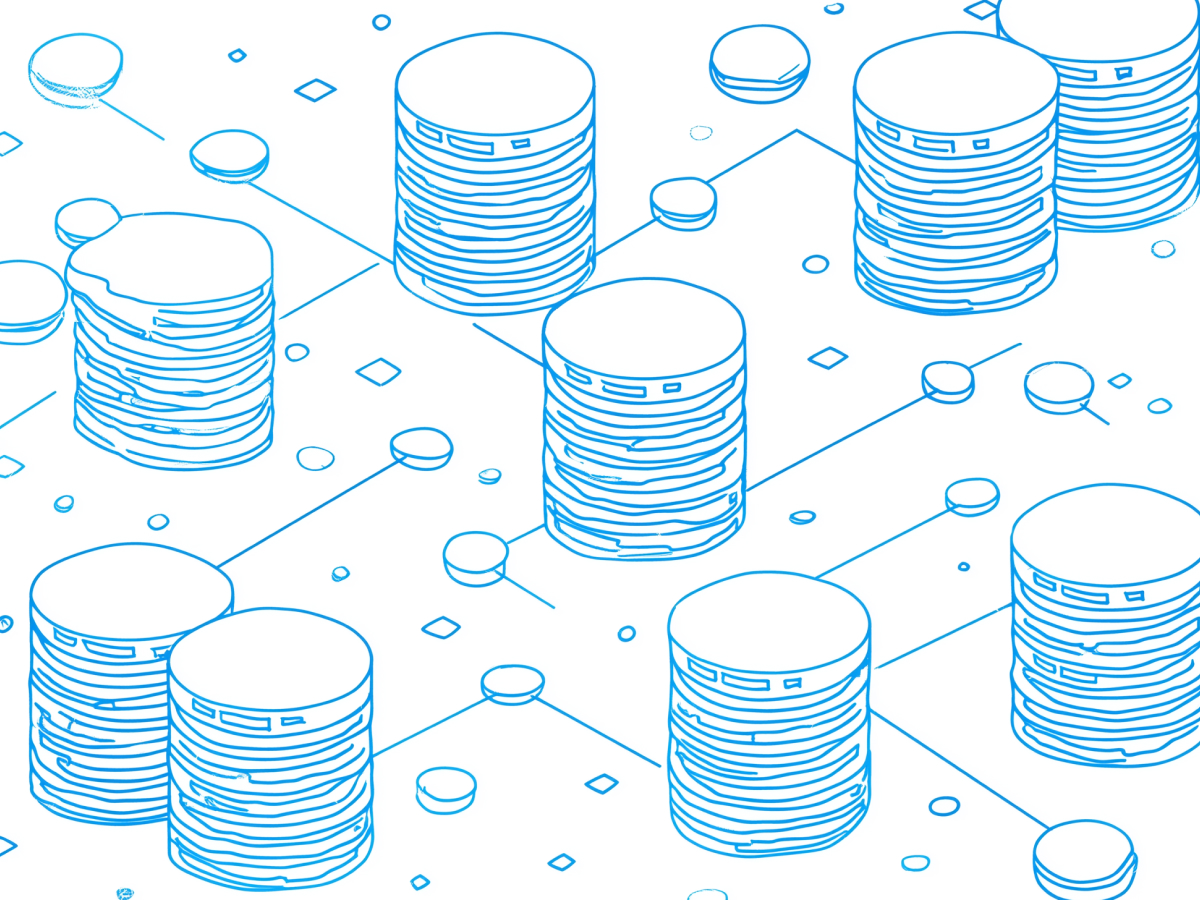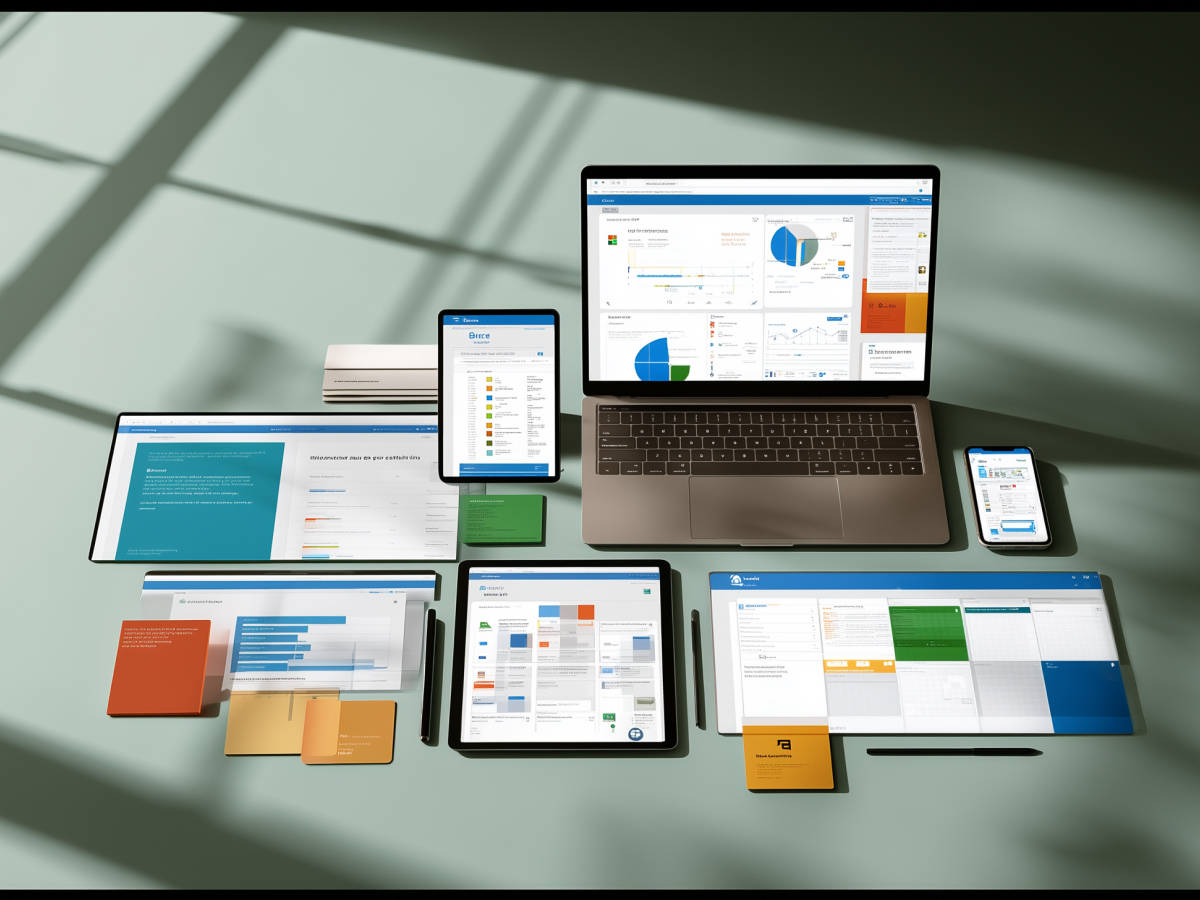LinkedIn as a dominant B2B marketing platform
LinkedIn has become the clear front-runner in B2B digital marketing. It’s targeted, deliberate, and designed for decision-makers. With more than 830 million users and 310 million of those active each month, it’s where professional conversation happens at scale. Nearly half of U.S. users show up monthly, making it a dependable channel for repeat visibility.
Now, don’t mistake high user counts for shallow engagement. What matters here is the intent behind these sessions. People on LinkedIn are recruiting, hiring, vetting suppliers, and exploring solutions. That aligns cleanly with B2B sales cycles. It gives your leadership team the platform to speak directly to the people who drive enterprise purchases.
Relevant to you: this is a platform where your message and brand are more likely to land in front of someone with budget authority. That alone makes it strategically valuable. LinkedIn moves dollars. Ad revenue hit $5.91 billion in 2022 and is projected to grow to $10.35 billion by 2027.
Robust marketing tools and targeting options
LinkedIn offers serious tools for marketers who understand their audience. You can get precision that’s difficult to achieve elsewhere. You’re targeting by company size, industry, job title, seniority, even recent behaviors like event attendance or form submissions. If your product is for CMOs at mid-sized SaaS companies, you’re in luck. You can go get those people, and only those people.
The ad formats are varied: Sponsored Content, Text Ads, InMail, even Dynamic Ads that automatically adjust for the viewer. One of the more powerful formats? Thought Leader Ads, these are posts made by your team’s experts but promoted under your company banner. LinkedIn says these posts get 2.3x higher click-through rates than basic image ads. That’s performance you can build a pipeline on.
Targeting options are layered. You can market to a company’s buying committee: decision-makers, influencers, and peripheral roles, all at once. Then you can track who engages, segment that, and respond in real time. Marketing here is interaction, and you can monitor what works and optimize with the built-in campaign analytics.
C-suite teams should be paying close attention, especially if the goal is new business. While other platforms focus on reach, LinkedIn delivers relevance. Its toolkit is built for professionals who spend budgets carefully, think long-term, and value credible, clearly framed messaging over viral noise.
More engagement through video and carousel formats
The modern buyer prefers dynamic content, and LinkedIn knows it. That’s why video and carousel formats are getting priority in the feed. They drive real engagement. Video posts saw a 53% increase last year, with impressions up 73.39%. Engagement is rising because the format rewards content that’s clear, visual, and easy to digest without slowing the user down.
Carousels outperform every other format in terms of engagement. Forty-five-point-eight-five percent, that’s the average boost in interactions. Whether you’re educating the market, announcing new solutions, or reinforcing brand positioning, these formats give your message room to unfold while keeping people’s attention. The result? Higher click-through rates, stronger recall, and increased time spent on your content.
Polls are also seeing significant visibility. They’re rarely used, just 0.00034% of LinkedIn posts use them, but that scarcity works in their favor. They generate 206.33% more reach than the average post. That’s useful when you’re looking to draw out audience feedback without long-form content. LinkedIn’s algorithm tends to reward interaction, and interactive formats deliver.
LinkedIn prioritizing what drives results. If your team is stuck on static formats, you’re already playing from behind. Adjust your content strategy and make video a central piece of it. Not every company is doing that yet, which means there’s still room to stand out before it becomes the baseline.
Amplifying reach through employee advocacy
Employee voice is trusted more than brand voice. It’s been validated again and again in B2B buying behavior. People trust people. And on LinkedIn, your team has the ability to expand the brand’s reach by magnitudes if they’re given the right tools, and the right nudge.
Start with training. If employees aren’t sure what to post or when to post it, the outcome is silence. Set clear expectations. Provide ready-to-share content and guidance. A centralized content calendar keeps messaging consistent and reduces the friction for team members. Then recognize the people who are doing it well. Public reinforcement works, whether it’s for product teams or marketing contributors.
For executives, it’s important to understand the dual benefit: improved marketing performance and stronger internal culture. When employees act as advocates, they feel ownership over the brand. It’s the whole company reinforcing market position in real time. The result is more authentic engagement and faster trust-building with your target audiences.
This scales if done correctly. And while there’s no statistical citation in this area within the article, the direction is grounded in reality: buyers engage more when they see real people behind the brand. If you’re investing in awareness and don’t tap into employee advocacy, you’re missing one of the most efficient levers available.
Increasing importance of influencer marketing on LinkedIn
LinkedIn is evolving. Until recently, influencer marketing wasn’t a major play here, but that’s changed. There’s a shift happening, driven by trust. Buyers are listening more to people with subject matter authority than they are to polished ads. This is especially relevant in B2B, where credibility and depth matter.
According to the 2025 Sprout Social Index, 92% of marketers say that sponsored influencer content on LinkedIn outperforms organic posts in reach. Another 90% report higher engagement rates. These are significant for campaigns aiming at decision-makers. Notably, 67% of B2B buyers say influencer content is critical during the consideration phase, especially in IT and complex professional services.
Expertise drives outcomes. Fifty-three percent of buyers say subject matter knowledge is the most important trait in a B2B influencer. So forget the popularity contest. This is about the most relevant voice. That’s where results come from, and that’s where budgets should go.
For C-suite leaders, the takeaway is clear. Influence on LinkedIn is driven by credibility and content utility. If you’re building brand awareness and trust, you don’t need ten influencers, you need the right one. You need someone who understands what your audience is solving for. Great influencer marketing on LinkedIn is about alignment, instead of volume.
Using real-time engagement with LinkedIn live
LinkedIn Live opens up real-time, interactive engagement with targeted business audiences. You’re speaking to viewers directly, answering questions, and gauging reactions in real time. That’s actionable feedback, not static data.
Used correctly, LinkedIn Live becomes a lead-generation asset. During sessions, you can collect email sign-ups, run contests, or offer gated content. That’s true value exchange. Audience members that participate or register have demonstrated intent. Which means you’re generating leads for the pipeline.
It also allows you to showcase more than just a message. You can demonstrate product value, explain market shifts, or speak to industry trends. That builds market authority. What separates this from a generic webinar is the broader exposure. LinkedIn notifies followers, prioritizes Live streams in-feed, and allows replays that continue driving traffic post-event.
Your team can schedule Live sessions around launches, partnerships, or industry moments and position your brand in front of stakeholders when attention is highest. That drives awareness and conversion together.
The best part: it’s not complex to implement. If your marketing team already produces video or webinars, you’re two steps away from LinkedIn Live. Just know that quality matters, sound, lighting, clarity, and the presenter’s delivery all impact engagement. Go in prepared, and you’ll get real outcomes.
Optimizing campaigns with LinkedIn analytics
LinkedIn Analytics is where you find out if your strategy is working or wasting runway. It gives you the data you need: who you’re reaching, how they’re responding, what’s resonating, and what isn’t. For B2B executives, this is crucial. You can’t manage what you can’t see. Visibility drives better decisions.
The platform breaks it down. You get audience insights like job title, seniority level, and industry. It shows you how each post performs, organic or paid, so you can double down on what’s effective and cut what isn’t. Beyond engagement metrics, LinkedIn also shows conversion trends over time, including click-through rates, form completions, and cost per result. This is particularly useful for full-funnel measurement.
One underused but valuable feature is campaign benchmarking. It lets you evaluate performance against industry standards. That’s how you move from internal validation to external market alignment. If your content is underperforming competitive baselines, you know it’s time to iterate.
Executives should view this as more than just reporting. This is real-time strategic intelligence. Marketing teams can use it to refine messaging, test creative, and pivot fast. You don’t need monthly reports, you need actionable insight now. LinkedIn provides that, if you know where to look.
Expanded capabilities within LinkedIn’s campaign manager
LinkedIn has upgraded its Campaign Manager substantially. More speed, smarter planning, better measurement. For leaders who care about marketing efficiency and scale, this is meaningful progress.
Media Planner now lets your team forecast campaign outcomes before launch. That includes expected results like reach, leads, impressions, and cost-per-key-outcome. It helps your team allocate budget more intelligently and make trade-offs without guesswork. Add Dynamic UTMs and you also get more precise campaign tracking without the manual setup burden.
There’s also the Ads Duplication feature, which solves a chronic time problem. Your team can now replicate campaigns across accounts fast, while keeping messaging, targeting, and structure intact. Consistency with optimization, without bottlenecking production.
Measurement has improved too. Updates now consolidate full-funnel insights under one view. You can connect awareness-layer activity to performance-layer results with clarity. And now there’s an AI-driven Campaign Performance Digest. It’s a condensed, data-rich summary of what’s working and what the system recommends doing next.
Executives should view these upgrades as mission-critical for operational marketing teams. They simplify execution without compromising performance. That means fewer blockers, clearer metrics, and faster decisions. When your campaigns are moving fast and the market is shifting even faster, this level of control and visibility is necessary.
Improving attribution with conversions API and revenue attribution report
LinkedIn has addressed one of B2B marketing’s most persistent issues: attribution. With updates to its Conversions API (CAPI) and Revenue Attribution Report (RAR), it now gives marketers a more accurate, connected view of where conversions originate and how revenue is actually influenced.
With CAPI, your first-party data, both online and offline, feeds directly into LinkedIn. That enables campaigns to capture actions across multiple touchpoints, reducing dependency on pixel-based tracking, which is increasingly limited in modern privacy environments. The end result: accurate conversion tracking that links actual leads to ad activity.
The proof is in the numbers. Marketers using CAPI have reported a 31% increase in attributed conversions, a 20% drop in cost per action, and a 39% decrease in cost per qualified lead.
RAR extends the visibility even further. You can measure impact beyond the short-term. It connects campaign exposure to CRM-sourced revenue data up to 365 days later. This helps clarify what got the lead, and what contributed to pipeline value and closed revenue.
If you’re a C-level executive, this matters. Your marketing budget needs to connect to business results. These tools do that. They eliminate soft metrics and replace them with performance tied directly to revenue. Whether you’re optimizing demand generation or validating spend, this is where accountability comes into play.
Better lead quality with qualified leads optimization
Qualified Leads Optimization is precisely what it sounds like, LinkedIn’s way of targeting ads at leads that are actually worth pursuing. Instead of casting a wide net, the system focuses delivery on accounts with known characteristics of success. That could be based on your CRM, Salesforce, HubSpot, or LinkedIn’s own first-party signals.
Advertisers define what a “high-quality lead” looks like, then share that data with LinkedIn’s Campaign Manager. From there, the platform identifies similar audiences and adjusts ad delivery in real time. This is targeting based on outcomes. The system improves itself with each data set you submit.
To get the full result, there’s a threshold: LinkedIn recommends submitting five qualified leads every two weeks, within a 30-day window. Once the system calibrates, usually after two weeks, it scales effectively. The benefit is lead quality. Marketing teams don’t need more names; they need better matches.
From an executive lens, this feature aligns sales and marketing by focusing only on accounts most likely to convert. That reduces wasted spend, shortens sales cycles, and increases efficiency across the funnel. If your current pipeline includes too much noise, leads that stall, drop off, or never close, this approach raises the signal. It’s a smarter use of budget in a more intelligent ad delivery system.
Engaging niche audiences through LinkedIn groups and hashtags
LinkedIn Groups and targeted hashtag use aren’t flashy tactics, but they’re efficient for engaging specialized communities. Groups give your brand access to conversations that are already happening within your target industry or buyer network. They’re slow to scale but reliable in quality, because the people there are intentional. They’ve opted in.
For marketers targeting niche sectors, think healthcare procurement, B2B fintech, mining tech, Groups offer a focused environment for interaction. Joining or even creating a Group that aligns with your audience gives you direct access to highly relevant discussions. This builds visibility in context, where your commentary or content has more room to resonate.
Hashtags support discoverability. They help your content surface in themed discussions, especially when used around timely industry trends or breaking news. The key is relevance and restraint, overloading posts with generic or excess hashtags drops credibility and engagement. Keep it lean and aligned with industry vocabulary.
However, trends are shifting. Mike Pastore, Editorial Director at MarTech, advises not to over-rely on hashtags. Engagement patterns suggest their visibility benefits may be declining. Monitoring traction is important, if they aren’t driving traffic or engagement, they should be revised or replaced with formats that do.
Tailoring messaging with LinkedIn showcase pages
LinkedIn Showcase Pages give you controlled segmentation within your brand messaging. Instead of one unified narrative, you build multiple focused ones, each tied to a specific product, service line, or market vertical. That level of specialization matters when your audiences have different needs and use cases.
These pages operate as extensions of your main Company Page. They allow your team to generate content specifically for a distinct audience, without diluting the master brand or confusing broader followers. You can go deeper into a subject, publish specialized case studies, or launch targeted thought leadership tied directly to that arm of your business.
For companies operating across industries or with multiple revenue streams, Showcase Pages help reduce noise. Executives can track engagement separately, analyze relevance, and fine-tune campaigns for each specific solution. That’s efficient allocation of creative resources and targeted tracking.
There’s another benefit: credibility. A well-curated Showcase Page signals expertise. It indicates to your audience that you have something tailored for them, and that you understand their space. That level of customization carries weight when selling to mid- and upper-tier buyers.
If your business is scaling, this structure supports it. You don’t need to mix all messaging into one pipeline. You can run dedicated campaigns aligned to different buyer personas, and do it visibly, under the LinkedIn umbrella. That’s brand clarity delivered at the segment level.
Enhancing ABM strategies with LinkedIn’s new companies feature
LinkedIn’s new Companies feature inside Campaign Manager gives marketers serious leverage for account-based marketing (ABM). This brings structured insights at the account level, with a centralized view of which companies are engaging across both paid and organic campaigns. It puts enterprise engagement data in one place, making ABM execution more intelligent and more scalable.
With Companies, marketers can segment by engagement level, country, company size, and interaction type, organic or paid. If a target account is showing low activity, that’s a signal to shift strategy, re-engage through new messaging, alternate offers, or customized campaigns. If an account is already active, it can be fast-tracked for sales follow-up or deeper conversion paths.
Data includes impressions, clicks, leads, engagement type, and time of activity. This gives a full-funnel view of how a company is interacting with your brand across LinkedIn. It also enables creation of dynamic or static account lists that update based on chosen criteria. You’re no longer managing lists manually, the system is doing that for you with current, in-campaign data.
Use cases are straightforward but critical: discover new accounts showing unexpected inbound behavior, increase visibility in low-engagement verticals, or build segmented campaigns aligned to awareness, consideration, or conversion stages.
For executives leading sales and marketing alignment, this adds clarity around where to prioritize resources. Instead of guessing who’s ready for outreach, you know. The data shows you which accounts are warming up, which are stalling, and where your ROI potential is highest. ABM works best when it’s responsive to real signals, this tool delivers them.
If growth depends on moving mid- and large-tier accounts through the pipeline more efficiently, Companies is a practical upgrade.
Concluding thoughts
LinkedIn is no longer just a networking site, it’s now a performance engine for B2B growth. If your team is still treating it like a recruitment tool or a resume board, you’re underestimating its value. The platform has matured. Between precision targeting, high-performing ad formats, intelligent campaign tools, and real-time analytics, you’ve got everything you need to drive measurable outcomes across brand awareness, lead generation, and pipeline movement.
What’s changed is the level of control. You can test, optimize, and scale with clarity, without guesswork. You can see who’s engaging, what’s converting, and where to push next. Everything is quantifiable if you’re set up right. And that counts in today’s market, where marketing and sales alignment needs to be tighter, faster, and accountable.
As a decision-maker, your role is to make sure your team is using the right platform with the right priorities. LinkedIn’s capabilities are built for impact. Use them to drive it.





